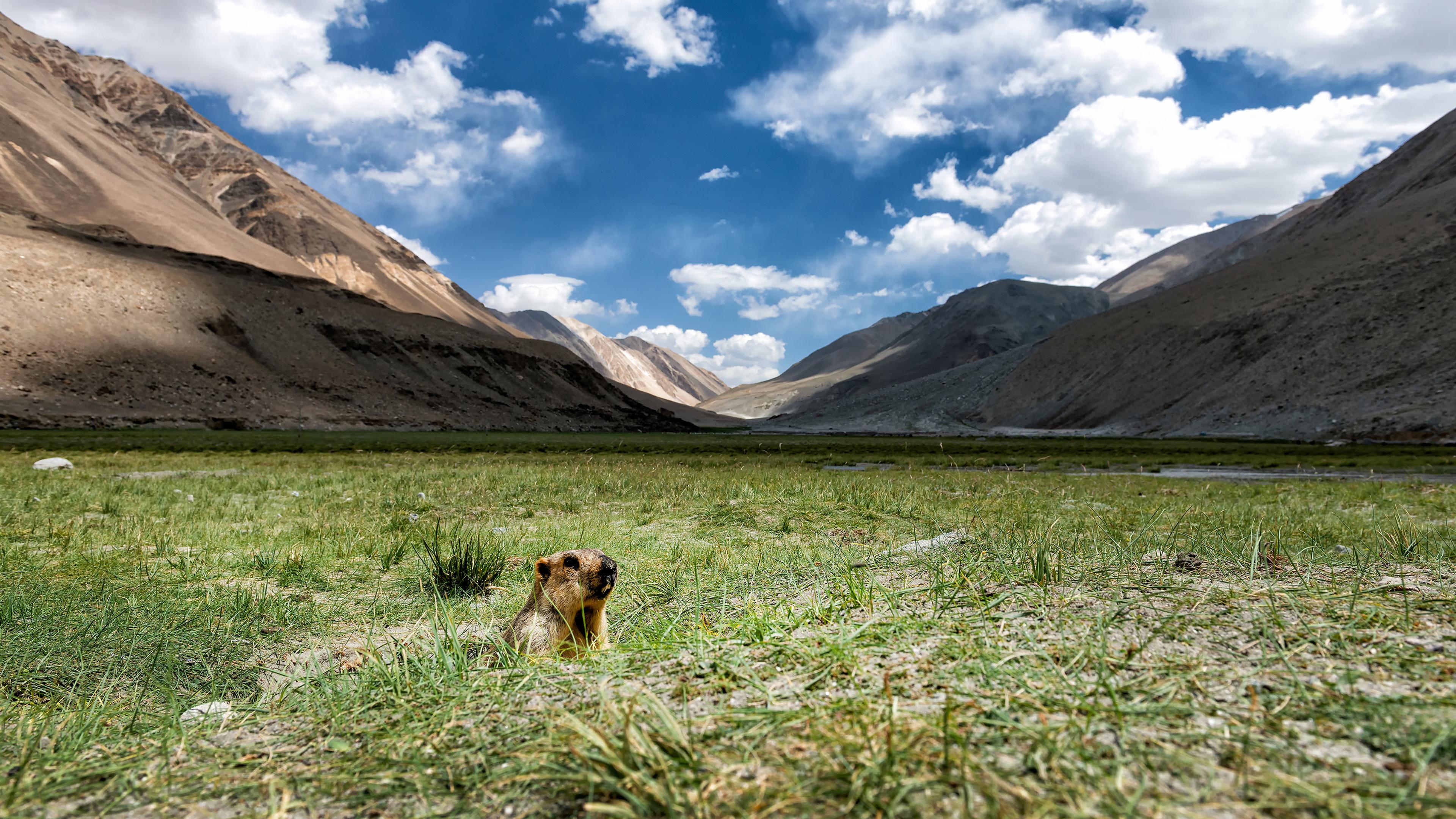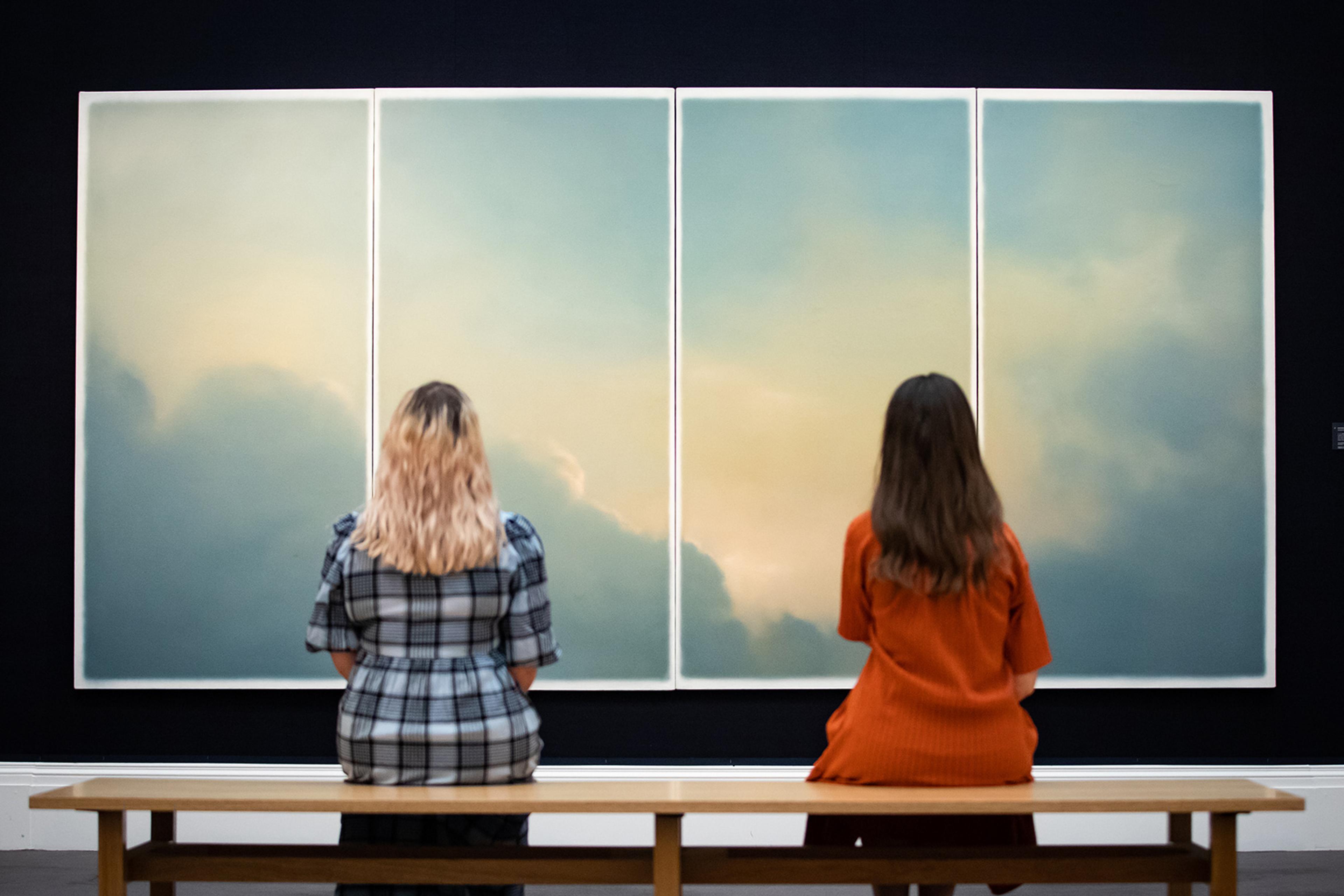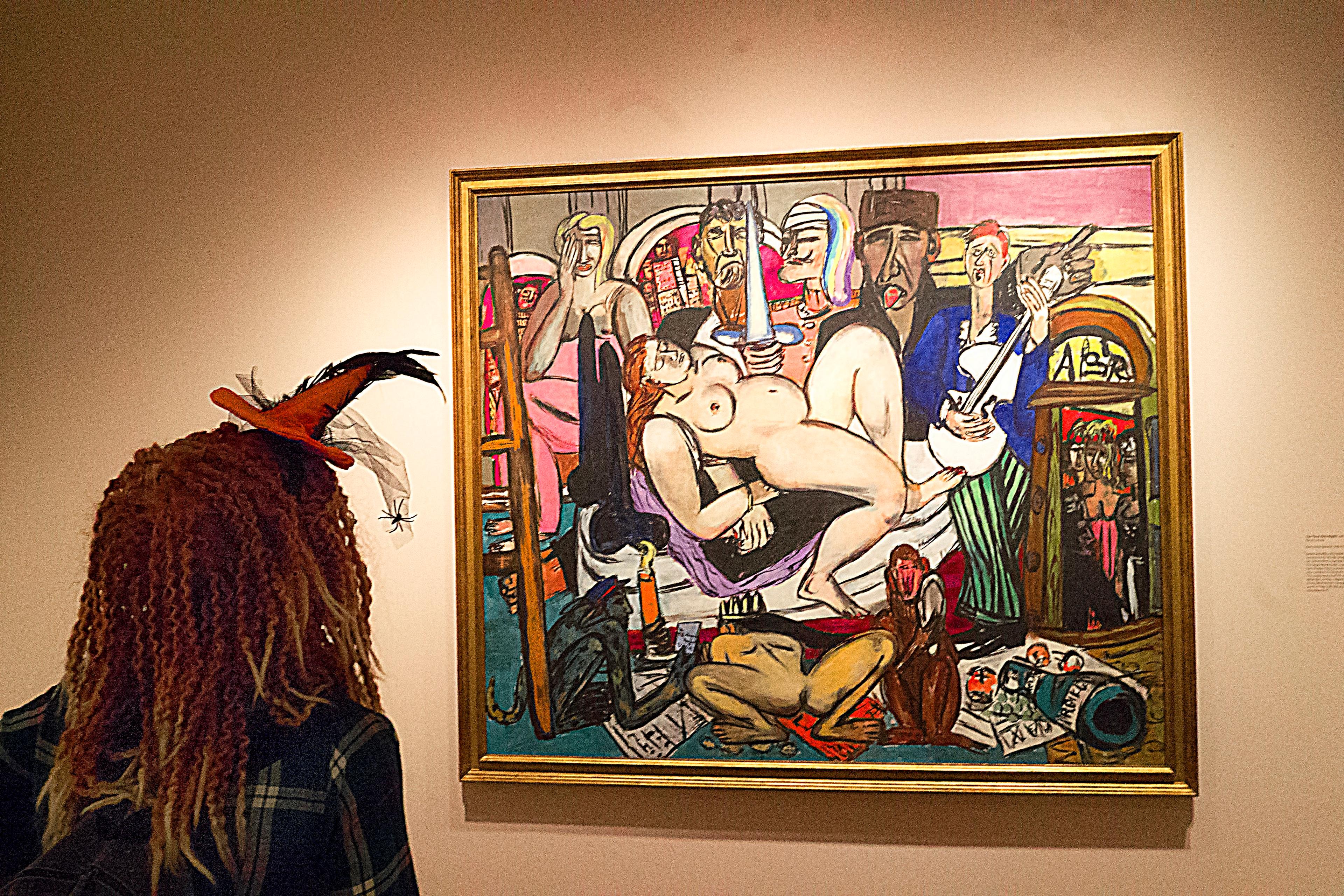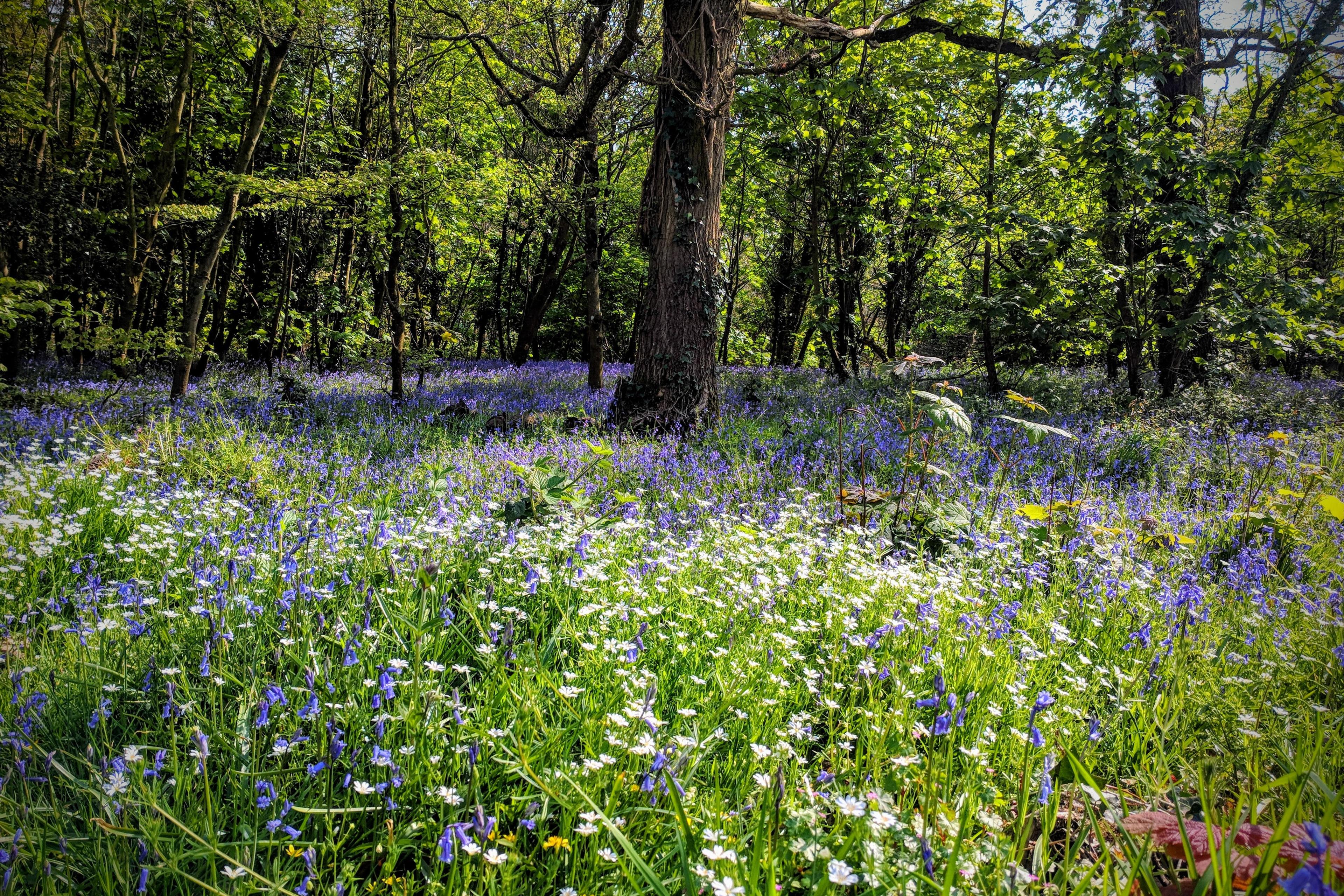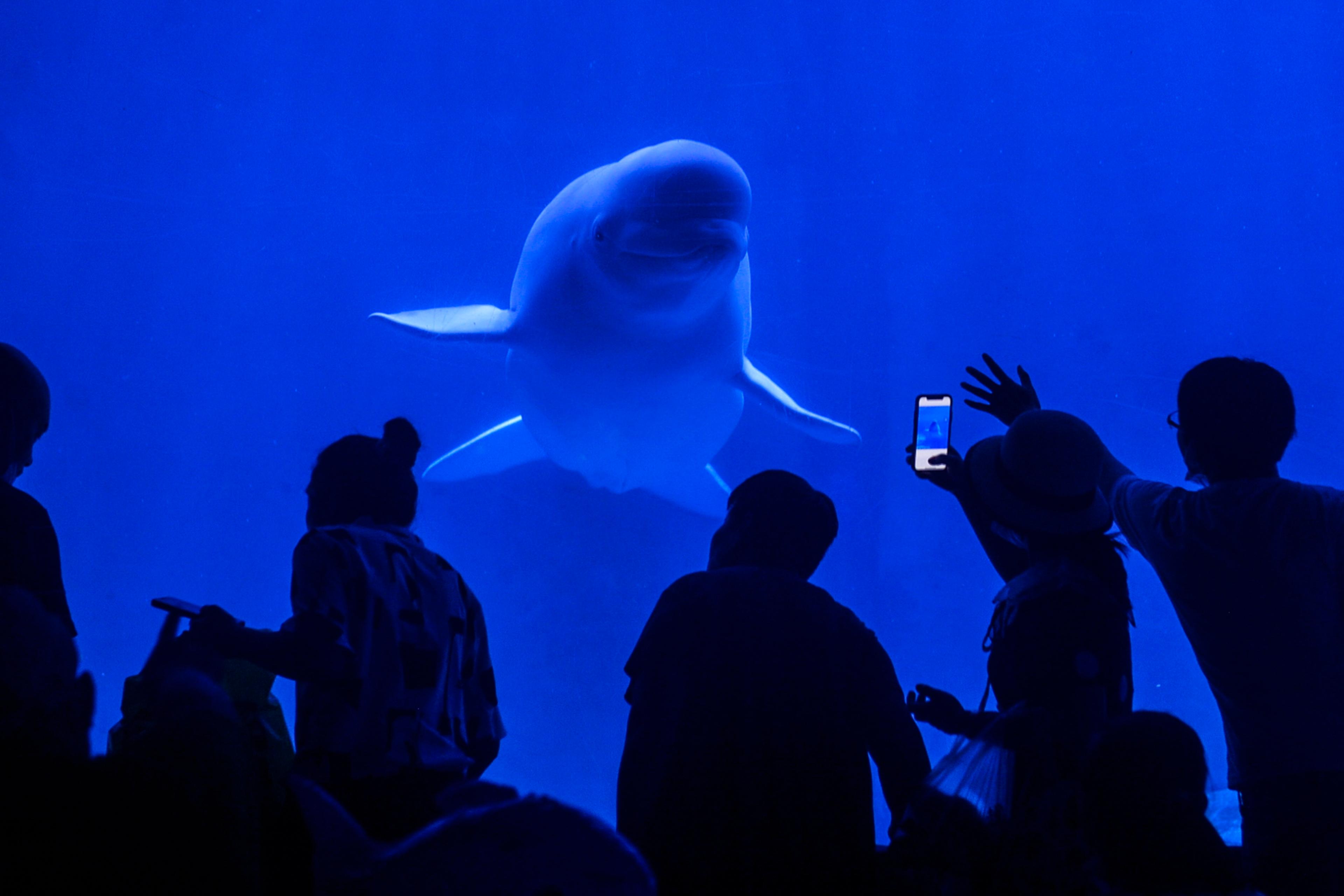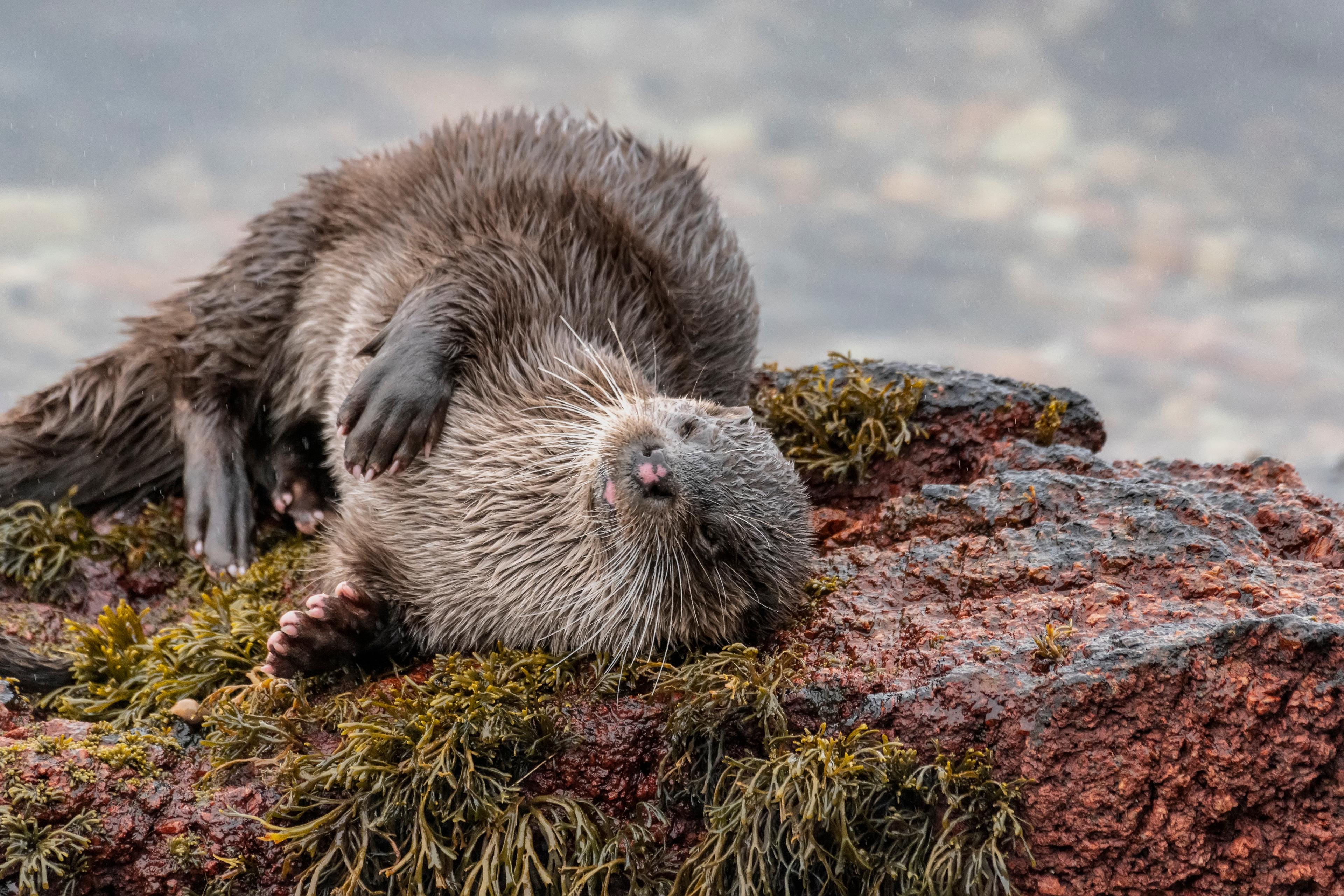On warm summer evenings, the groundhog who lives beneath my deck likes to climb atop a bench and look across the field. As I watch, I sometimes wonder what is on her mind while she surveys her domain. The simple explanation is that she is scanning for predators, and given the realities of groundhog life, this is quite likely. But is that all there is to it? Might she also enjoy the sight of grasses swaying in the breeze and the sound of rustling leaves? Might she even find them beautiful?

Juliette gazes upon the world. Photo supplied by the author
Such sensibilities are an essential, everyday part of human experience. They have also been largely denied to other animals. ‘Sensitivity to beauty and making or doing things that are perceived as “beautiful” are among the traits that elevate man above the brutes,’ wrote the great evolutionary biologist Theodosius Dobzhansky in 1962. It’s a statement emblematic of scientific attitudes past and present. Even though research on animal intelligence has flourished, the aesthetic capacities of other species have received little attention. Today, we are comfortable describing these animals as having self-awareness, complex emotions, language-like communication, and even culture, but we hesitate to say they have a sense of beauty.
Perhaps that is because our ideas about beauty have been shaped by the philosophical traditions of the Enlightenment. Back then, beauty was conceived as a rarefied property best appreciated by mostly disinterested intellectual observers. That nose-in-the-air, art-for-art’s-sake concept of beauty no longer holds much sway in a culture that recognises the potential for beauty in pretty much anything, from classical art to windblown plastic bags. But Enlightenment thinking left behind a habit of regarding aesthetic experiences as distinct from other pleasures. Animals could hardly be expected to share them.
Some scientists have come to think otherwise. They see our capacity to appreciate beauty as part of a shared evolutionary inheritance: a neurobiological system found in many other creatures that shapes behaviour in useful ways. ‘The only reason why we think of a divide between humans and other animals is because we accept the assumptions that are built into the philosophical concept’ of beauty as a unique experience, says Martin Skov, a neuroscientist at the Danish Research Centre for Magnetic Resonance. But if one focuses on ‘what brains actually do,’ he continues, ‘there is no reason to say that only we experience beauty and other animals do not.’
Researchers like Skov have found that when someone perceives something they consider beautiful, it is accompanied by intense feelings of pleasure and wanting. Conversely, when people take drugs that limit their ability to feel pleasure, their capacity to perceive beauty (specifically beautiful faces) is diminished. Brain imaging also suggests that the pleasures produced by beauty are indistinguishable from other kinds. No separate, beauty-specific system or pathways are involved.
Perception and pleasure likely intertwined early in animal history
‘[T]he pleasure of aesthetic experiences is the basic and ordinary pleasure of other sorts of experience,’ wrote Skov and his long-time collaborator Marcos Nadal, a cognitive psychologist at the University of the Balearic Islands, in a recent Nature Reviews Psychology article.
Pleasure is evolution’s way of encouraging useful behaviours, and the adaptive advantages of linking perception to a capacity for feeling good are obvious: individuals who are visually drawn to vibrant red hues, for example, should more readily spot ripe berries, and the reward of their taste is encouragement to eat more. Perception and pleasure likely intertwined early in animal history, not long after multicellular organisms evolved to convert external stimulation into electrical signals.
In humans, beauty’s rewards are generated by the mesocorticolimbic reward system, a network of structures and processes that are integral to motivation, learning, decision-making and behaviour. Many other animals possess this system or something similar to it. ‘All of this is already present in early vertebrates, 500 million years ago,’ says Nadal. Even the reward systems of amphibians are not so different from our own.
But if a capacity for beauty is widespread, what about stimuli that are considered beautiful? In humans, researchers have failed to find any truly universal beauties, but there are some consistent preferences. People tend to find symmetry appealing. They usually prefer curves to straight or jagged lines, and harmony to dissonance. Complexity is also appealing, although only to a point; a sense of orderliness makes it even more attractive.
Studies on whether other animals share these sensibilities mostly involve primates, rats, and a few test-amenable bird species. Chimpanzees seem to share our fondness for the colour red and for curved objects; newborn junglefowl soon develop a preference for symmetry. Even so, one can imagine that aesthetic sensibilities have far-reaching evolutionary roots, which go beyond tested species. Choosing mates is an obvious context: some researchers suggest that symmetry is generally a marker of good health. Another context is risk avoidance: jagged, angular objects are often dangerous. More broadly, complexity tends to reward a sense of curiosity. Richard Prum, an evolutionary biologist at Yale University, suggests that beauty demands ‘prolonged social and sensory engagement’. That engagement may have clear evolutionary benefits: an animal that lingers on a flowering tree’s loveliness might have a better chance of remembering its location when fruiting season comes.
We are even capable of finding beauty in ideas
To Prum, animals can only take aesthetic pleasure in those entities with which they have coevolved : wood thrushes and their layered, flute-like courtship songs, for example, or bumblebees and the pinks of wild roses. After countless generations of evaluation and choice, those stimuli are now entrained in their brains. Prum also thinks humans are unique in their ability to project tastes from one domain onto another, as when a predilection for colours that coevolved with fruit are projected onto the hues of a sunset.
Though this is an untested proposition, it’s easy to imagine how aesthetic tastes could evolve for any stimuli that are relevant to an animal’s survival. A monkey with an eye for a sunset’s glorious colours would be more attentive to looking skywards in the evening, and thus more likely to spot predators approaching from above. Should my groundhog neighbour enjoy the balance between complexity and order found in a field’s swaying grasses (and thus have an extra incentive to watch the field), she might have a better chance of spotting an approaching fox.
Such commonalities do not mean that nothing is unique about human concepts of beauty. Skov and Nadal suggest that we are alone in our capacity to intellectualise beauty, creating definitions and abstractions that in turn shape our evaluations. Culture is especially powerful in influencing our ideas of attractiveness, so much so that people from different cultures may have different standards of physical beauty. We are even capable of finding beauty in ideas.
Yet to me these distinctions are less meaningful than what we might share. Appreciating animal aesthetics nourishes a richer experience of the world. Prum sees nature through a lens of aesthetic coevolution; to look upon a wild rose is to see an entity created by millions of years of pollinator attention, choice and pleasure. ‘Beauty itself begets diversity and complexity,’ he writes. This awareness also adds a new dimension to conservation. ‘When we preserve nature,’ says Prum, ‘we are preserving worlds in which other aesthetic pleasures can thrive.’
We can also set our imaginations free to speculate on what other creatures find beautiful. The biologist Bjørn Grinde and cognitive psychologist Tammy-Ann Husselman speculate that humans evolved to ‘take delight in scenery suggesting a human-friendly habitat’. What visual delights might migratory birds find in the landscapes over which they fly, looking for a place to rest and replenish? What could a sea turtle tell us about the elegance of nearshore currents, or a blind mole about the texture of soil?
Knowing that animals possess a sense of beauty yields a richer sense of their lives, too. It’s all too easy to stereotype wild animal life as brutish and fearful, and to assume that their thoughts are dominated by calculations of survival. We don’t think so much about the pleasures they take, the moments of lightness, and it gladdens my heart to consider that just as I find satisfaction in the sight of grasses swaying in an evening breeze, so might a groundhog.
